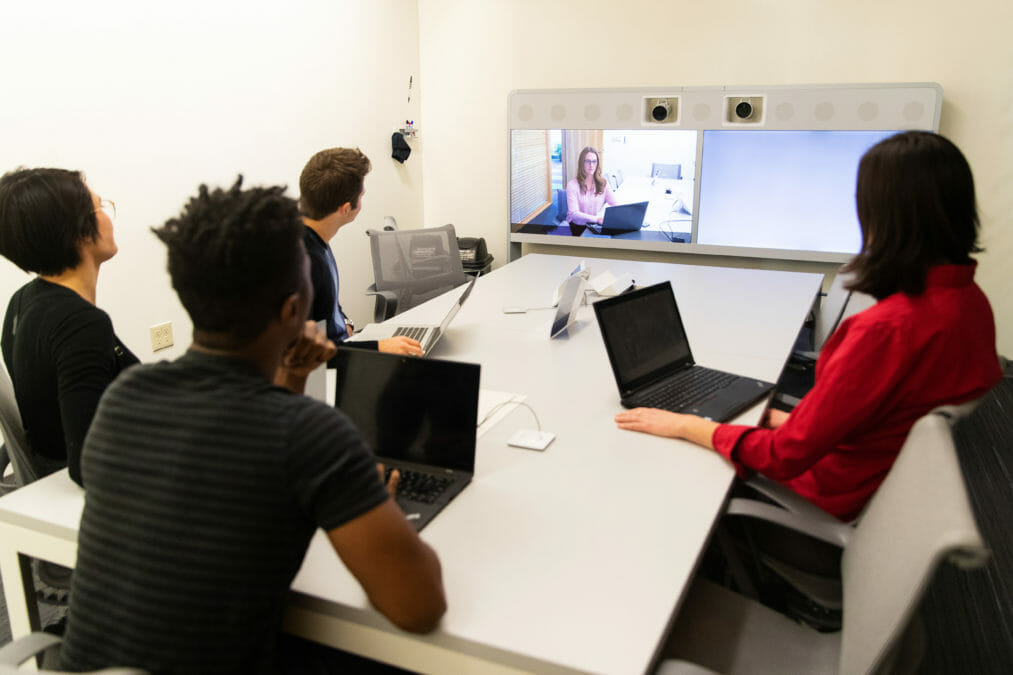The global spread of Covid-19 has marked a watershed moment that reveals just how well-prepared businesses of all sizes are for unexpected workplace changes — some will need a remote working guide.
Travelling for meetings, or simply commuting to the office may be greatly decreased or even stopped completely. As has already been seen across China and closer to home in Italy, entire towns and cities are now locked down under quarantine.
As well as the obvious panic that global health emergencies like the coronavirus can cause amongst the public, the disruption they cause to businesses can often be overlooked. However, by ensuring that you have a robust disaster plan in place, you can help mitigate the impact that these could have on your business.
Simon Moxon is the founder and CEO of Meetupcall — a UK-based conference call provider who help organisations of all sizes to work and host meetings remotely. Here, Simon gives his five key tips to help you implement emergency remote working guide for your teams.
1. Face up to the reality that your workforce may be forced to stay at home.
Burying your head in the sand and hoping that the coronavirus will just go away and not affect your business isn’t a viable option. Public Health England have already warned that widespread transmission of the virus is now highly likely, with worst-case scenarios showing that up to 80% of the UK population may contract Covid-19. Simply handing your employees a laptop and telling them to stay at home on the day of a quarantine isn’t going to work. You need to put a disaster plan in place now for such an eventuality.
Decide on how your business could remain operational should the office be closed tomorrow.
Gather a cross-functional team including line managers, IT, HR, operations, communications and any other departments or key stakeholders and start to plan for different scenarios. Decide who would need to do what should the situation require a rapid response.

2. Evaluate the roles and tasks that could be affected
Map out each employee or department’s job roles and tasks and group them in to one of the following categories:
a) Jobs and tasks which can be carried out, even partially, without a physical presence in the office.
b) Jobs and tasks which cannot be carried out, even partially, away from the office premises.
For any that fall in to the second group, challenge any assumptions that a particular role cannot be carried out at least in part remotely. With modern internet connections and 4G coverage alongside collaborative business tools such as Slack and Meetupcall it is rare that many tasks cannot be carried out in some capacity away from the office. Of course, certain jobs will always require a physical presence, but if these can be limited to as few tasks as possible then contingency plans can be put in place for these.
3. Audit your IT hardware and software and close any gaps in access and adoption
In order to work effectively from remote locations, it is more than likely that employees will require access to devices that can connect to the internet (as well as an internet connection). Laptops and mobile devices are the most obvious, however it may be that they would need desktop computers at their homes. Any data-security issues would need to be considered and addressed if employees are accessing the internet away from the office.
On the software front, there are many apps and collaboration tools out there that will help your employees to work remotely. If you haven’t already, consider rolling out an internal collaboration tool such as Slack to help your workforce keep in touch. For meetings, both internally and with external clients and customers, then a conference calling solution would help to replace physical meetings. Ensure your full workforce is trained up on these software tools and where any gaps are identified then provide training and opportunities for practise before staff need to use them.
How CIOs can limit the business disruption of the coronavirus — Gartner
4. Decide on a company communication plan in advance
One of the biggest challenges when working remotely is keeping the whole business in contact with one another. It is vital that you decide on how everyone can keep in contact and choose your preferred communication channels. For example, you may request that everyone sends daily email updates. If you do implement an internal communication tool such as Slack then you could set up dedicated channels for each department to keep in touch. Other options may be WhatsApp groups or other instant messenger options.
In addition to internal communications, you will need to decide how you communicate with customers and clients, and how and when teams will coordinate and hold meetings.
5. Review the success of the remote working period to help inform a broader change
Once the remote working period is over and employees can begin to return to the office, it would be extremely valuable to reflect on the period and review what worked, and what didn’t.
As well as helping you to be better prepared for any similar situations that could arise in the future, you may find yourself asking the question “Why don’t we work like this all the time?”.
Depending on the outcome of your review, you may decide to implement some aspects of the remote working period permanently. For example, if you found that conference calling worked well in replacing physical meetings then you might decide to replace some of your business meetings with conference calls. In doing so, you could help to reduce your companies’ business travel — something which may form part of a wider business strategy for cutting carbon emissions.
This remote working guide should help UK businesses manage the disruption caused by the coronavirus.
[emailsignup]







